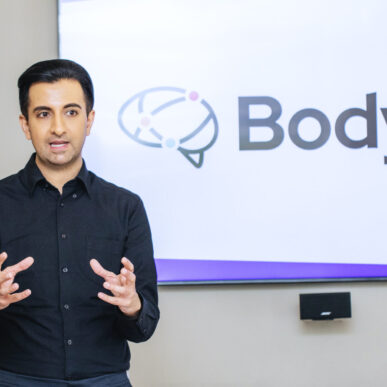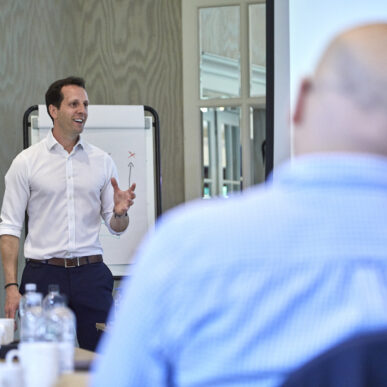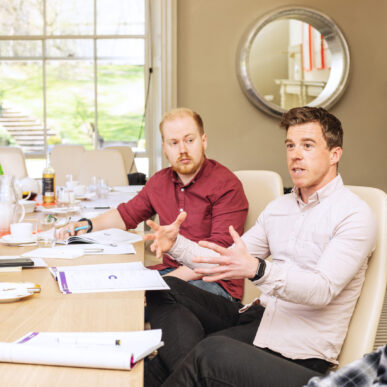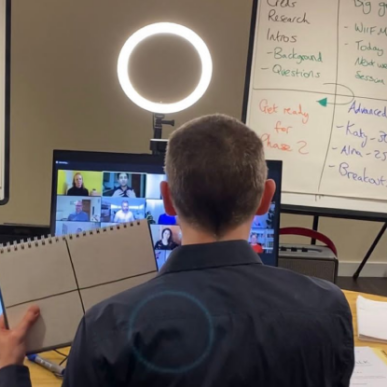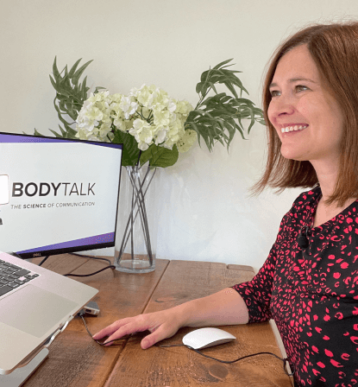Connecting with your audience is the single most important thing you’ll do as a speaker.
It can also be the hardest.
Every audience is different. The style and content you used successfully one day could bomb the next day with a new group.
You must be able to adapt to the needs of the people sitting in front of you.
When you connect with your audience, you instantly start to build their trust and gain their confidence. You’ll come across as credible and your audience engagement will increase. Ultimately, connecting with your audience means better communication, which leads to increased influence and the potential for stronger business relationships.
One popular piece of advice that came from a lot of sales training seminars in the 80s was to copy everything you see the other person doing. If they lean back in their chair, then you lean back. If they fold their arms, so do you.
To some extent, mimicking can work because rapport can be built by nonverbally matching the other person. But most of the time I see people overdoing it. The person they’re speaking with notices that their every move is being watched and feels self-conscious all of a sudden. Then the mirroring becomes off-putting and feels very much like a sleazy sales tactic.
It’s entirely possible to build a rapport with your audience without copying everything they’re doing. It all comes down to a few key things:
1. Tailor your message to your audience
Here’s something that may surprise you: NOBODY CARES ABOUT WHAT YOU WANT TO SAY!
What they really care about is what they need to hear.
If you can give people the information they need from start to finish, in the right order, they’ll be compelled to listen and feel connected with you.This means adapting what you’re saying and how you’re saying it.
Aristotle gave us a format for this when he was writing speeches for Alexander the Great. He came up with the sequence of ethos, pathos, and logos.
You start off with ethos, which is effectively your credibility. You set up your context and background so that people gain an understanding of who you are and why they may benefit from listening to you.
Then you move onto the pathos, or the emotional connection. You’re telling the audience what they’re going to gain by listening to you and showing that you care about giving them value.
Finally, you proceed to logos, which is the logic portion. Because at this point, your audience’s logical mind will be thinking, “Okay, I’m ready for it, hit me with the information.”
In this way, you’ll be connecting with your audience by tapping into how their brain is built: trust, emotion, and logic.
A good place to start is by focusing on aligning your own message with the audience’s interests, challenges and goals. As we’ll discuss shortly, this is a crucial part of building trust and ensuring that your business communication really resonates with the people you are speaking to.
2. Know your audience
How well do you really know the audience that you’re speaking to?
Taking the time to find out as much as you can about them will vastly improve your business communication skills and your audience engagement will be greatly increased.
Research your audience well. Who are they and what are the current challenges that they face? What do they care about the most? Is there any context or background detail that could be crucial to their decision-making? What sort of objections might they have?
Knowing the answers to these questions will help you to really tailor your communication to your audience.
You may wish to consider conducting audience analysis in advance, such as individual surveys or demographic information: this can also help you to develop a clear picture of who your audience is and what is likely to be most important to them.
If you don’t have the opportunity to do a lot of research beforehand, don’t be shy of asking your audience questions to find out what their challenges and goals are.
3. Adapt to their needs
Aside from arranging your presentation in a way that appeals to your audience’s natural brain, you’ll also have to adapt to their needs.
This means ignoring your own self-conscious worries or anxieties. When you go into a meeting, a conversation, or a presentation, you should completely focus on who this person is and what they need from you.
One of the ways you can adapt is by noting a person’s ‘social style’.
For example, they might be a ‘driver,’ or someone who cares mostly about the big picture. When talking with you, ‘drivers’ want to know what the effect will be on the bottom line for the company, and what this will mean for them three years from now. They like to drive the conversation forward.
Conversely, someone may be an ‘analyst’. They want to have all the details behind your points as you’re making them.
Adapting to a person’s social style is a way of making sure you feel a stronger connection with them. You don’t have to abandon yourself or your personality, but you can adjust it for your audience.
4. Use captivating opening techniques
For the best audience engagement, you really need to captivate people at the very beginning, so that they’ll be more likely to listen to you all the way through and be engaged and motivated by your message.
When you create a strong first impression, it sets the tone for the rest of your speech or presentation and helps to establish your credibility from the start.
Compelling stories are an essential part of creating this engagement. Think of personal and relatable examples that you can weave into your communication to make it more engaging.
Asking thought-provoking questions can also be an effective way to engage your audience by piquing their curiosity.
5. Build rapport and establish trust
Throughout your business communication, you need to continually build rapport with your audience and gain their trust.
One important way of doing this is through your body language. Make sure that you are making eye contact with your audience: not only does this help to build trust, but it will also help you to understand how well the audience is responding to your content.
Check in with your audience to ensure that people really understand your message and give people the opportunity to voice their thoughts, observations or questions. This again will help to build up that trust.
If you’re faced with objections, difficult questions or complex thoughts, make sure are listening actively with the intent to understand the other person’s needs or concerns. It’s essential that you demonstrate empathy when you are listening, so that the other person feels heard and understood.
6. Remember how you want your audience to feel
The final piece for connecting with your audience is having a fine-tuned intention.
You should know exactly how you want people to feel at the end of your conversation, meeting, or pitch.
Focus everything you’re doing — your words, your body language, your voice, all of your intention — toward a feeling you want people to have as they leave.
This will help you to feel less self-conscious too, by placing all of your focus on the people in front of you and serving them as best you can.
Focusing on your intention for your audience can help you to craft an impactful and memorable conclusion. Use your closing statement as an opportunity to recap your key points, reinforce your core message and leave the audience on a high, feeling motivated and inspired.
Perfect your speaking craft with Body Talk
Taking time to really hone your business speaking skills can transform your confidence and success in communication.
Whatever your level, whether you’re a novice or much more experienced, we’d love to help you to develop and improve to ensure you’re connecting with your audience every time. Contact our team today to see how we can help you.







